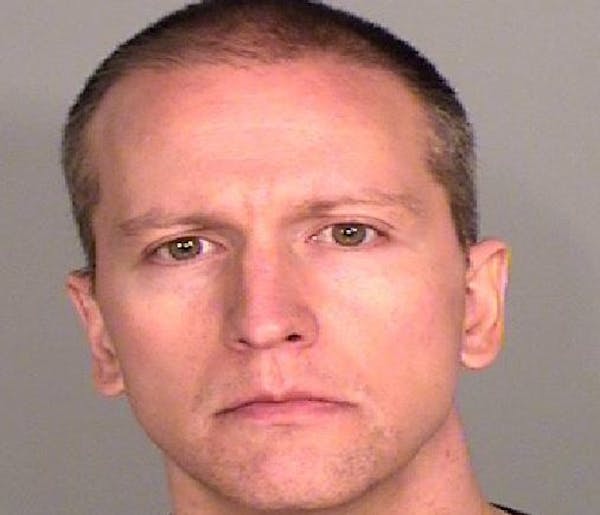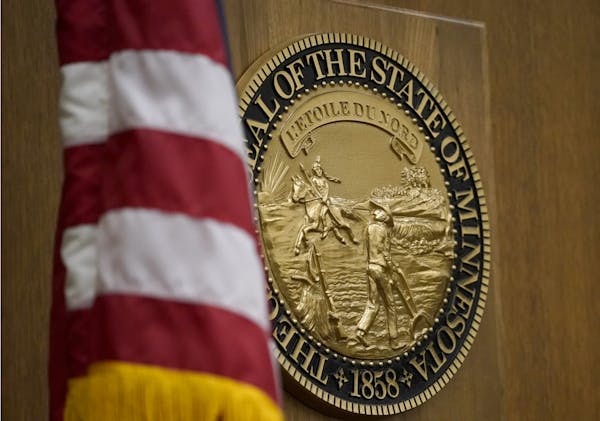Nearly two weeks into Derek Chauvin's trial in the death of George Floyd, the world has watched the vetting of dozens of prospective jurors who will consider whether the former Minneapolis police officer goes to prison.
Not only is the trial historic, but so too is the fact that it can be watched by anyone with a decent internet connection — offering unprecedented access to Minnesota's courts that advocates hope could open the door for future televised sessions.
The livestreaming of the trial has pushed Minnesota into a simmering national debate about televising court proceedings. Minnesota has one of the most restrictive policies in the country, permitting audio and video recordings only after a guilty plea or a guilty verdict.
"This is an opportunity to demonstrate that cameras neither detract from the solemnity of the proceedings nor do they interfere with the court's ability to get on with its work and for the public to see what's being done in the courtroom," said Jane Kirtley, a lawyer and director of the Silha Center for Media Ethics and the Law at the University of Minnesota.
Hennepin County District Judge Peter Cahill issued the order in November, citing the COVID-19 pandemic and international interest in the trial as the reason for livestreaming it. While the order grants unprecedented video access, it also greatly limits physical access to the courtroom.
Attorney General Keith Ellison's office, which is leading the prosecution, fought the order in court, saying that livestreaming could sacrifice the privacy of witnesses and expose them to threats and intimidation. "The risks of broadcasting witness testimony are particularly acute where, as here, live video and audio coverage may be intimidating to some witnesses and make it less likely that they will testify, potentially interfering with a fair trial," the motion said.
A coalition of local and national media companies, including the Star Tribune, filed a memorandum opposing the prosecutors' request, saying that livestreaming is the only option to guarantee constitutional rights to a public trial because the court's closed-circuit technology offers low-quality video and sound.
Cahill dismissed the attorney general's motion, concluding that "televising the trial is the only reasonable and meaningful method to safeguard the [constitutional] rights implicated in these cases."
By Thursday, 10 jurors had been seated, though the cameras are forbidden from showing their image and the court has taken significant steps to protect their identities. The court expects to select 14 jurors, including two alternates. The trial is set to begin March 29 and last a month.
So far, 360,000 viewers have tuned into the Star Tribune livestream during the first nine days. As many as 4,000 have tuned in at any one time. Local TV stations are broadcasting the livestream as well, as is Court TV, which is providing additional legal reporting and analysis.
Viewers have seen lawyers discuss motions and quiz jury candidates as Cahill guides the proceedings and explains the screening process to prospective jurors. The livestream is also a rare chance for the public to see Chauvin, who is free on bond. Wearing a suit and tie, he stands ramrod straight when Cahill enters the room at the beginning of each day, then generally sits next to his lawyer, writing notes in a yellow notebook.
"For me, it's an affirmation of how ordinary this is," Kirtley said. "The cameras are having no impact on what's happening in the courtroom."
Most of the proceedings will continue to be livestreamed by Court TV cameras in the 18th floor courtroom of the Hennepin County Government Center in downtown Minneapolis. Courtroom access is strictly limited to the lawyers involved, the defendant, the judge and his staff.
One member of Floyd's family can sit in the room each session. Chauvin is also allowed one supporter. Along with the Court TV technician, there are two reporters in the courtroom every day on a rotating basis and they provide written observations to the reporters who are outside observing the video feed.
"These are the kind of proceedings in which we all have a deep investment and we all deserve to watch the proceedings play out unmediated by a third party," Mitchell Hamline School of Law Prof. Raleigh Hannah Levine said.
By court order, prospective jurors can be heard, but not seen. One glitch came last week when observers outside the courtroom, Chief Judge Toddrick Barnette and a former judge, sent notice to Cahill that the image of prospective jurors was visible in the protective plastic dividers set up in the courtroom.
Court personnel made adjustments so the jurors were not visible. A day later, a prospective juror told the court that he had checked the feed from home to make sure jurors weren't visible. He ended up being dismissed.
Throughout the questioning of prospective jurors, Cahill and the lawyers have guided them away from revealing their identities. For potentially revealing or embarrassing questions, Cahill has paused the audio to allow the jury candidate to speak candidly. Generally, the audio and public questioning have resumed within a few minutes.
By order, the cameras have been mostly fixed, not zooming in and out or showing reactions. During breaks, the camera locks in on the state of Minnesota seal over Cahill's chair.
Former Hennepin County Chief Public Defender Mary Moriarty said the public is getting a look at how difficult jury selection can be. She noted that some jurors have expressed concerns about their safety and fears of their identities being made public, even with all the precautions.
"So you wonder what impact that has on how they answer certain questions," she said.
Two experienced criminal trial lawyers also gave livestreaming high marks.
"The public ought to know what happens in court. They deserve to know," Washington County Attorney Pete Orput said. "When they bar cameras, it just becomes more arcane."
Criminal defense lawyer Earl Gray has been watching closer than most. He represents Thomas Lane, another former Minneapolis police officer who, along with J. Alexander Kueng and Tou Thao, is charged with aiding and abetting Chauvin and faces trial in August.
Gray has represented several high-profile defendants in trials televised from Wisconsin where cameras have long been allowed in courtrooms.
"As you can see, it doesn't interfere with the trial at all," he said. "After five minutes, you don't even realize they're there."
The media coalition has been in touch with court administrators about the logistics, expectations and challenges of balancing the right to a fair trial and a free press.
Barnette, who worked with Cahill on setting up the feed, said he would refrain from commenting on the implications of the livestream until after the trial.
Levine and Kirtley said they hope it adds to public understanding of the courts and leads to future broadcasts of Minnesota trials.
"I think it will eliminate the argument that cameras are inherently disruptive," Kirtley said. "There will be a great deal of pressure on government entities to continue this level of access."
Rochelle Olson • 612-673-1747
@rochelleolson





